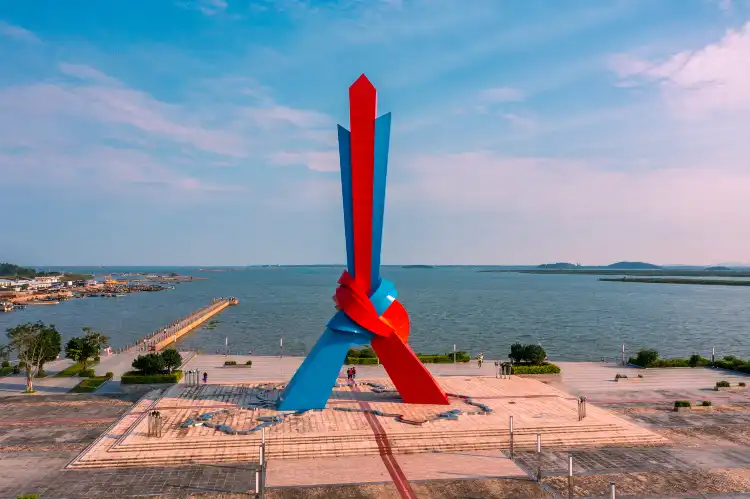
Find the Cheap Dongxing Hotels
Enter your dates for the latest hotel rates and availability.
Swipe up to view more
Filter by:
Hotel Star Rating
≤2345
Popular Filters
Amazing 4.5+Great 4.0+Good 3.5+Pleasant 3.0+We found 429 hotels for you in Dongxing
Choose your travel dates to see the latest prices and deals.
Most Booked
Lowest Price
Closest to Downtown
Highest Rated

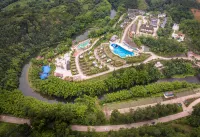

Hotel near Dongxing
Changhu Resort is a high-end resort invested by Beijing Real Estate Construction Group and operated by . It is located in Changhu Village, Dongxing Town, Dongxing City, 6 kilometers away from the city center of Dongxing. The resort covers an area of 108 acres and consists of 12 high-end villas, 2 Beijing style courtyard houses, Haoxing International RV Camping Base (8 German imported high-end RVs), 8 standard rooms, and a large outdoor endless swimming pool, Bamboo Forest Restaurant, Children's Amusement Park, Meeting Room, KTV Private Room, etc. The buildings are located along the mountain, driving the mountain and facing the river. They are integrated with the mountains, forests and rivers, and the natural landscape is unique.The villa adheres to the concept of "houses in the forest, forests in the houses", and centers on a high-end, ecological, and sustainable composite vacation and leisure industry. It establishes a business model that integrates multiple functions such as culture, creativity, experience, leisure, commerce, and entertainment, providing comprehensive tourism and vacation services for Guangxi and even Southeast Asia.
Excellent
58 reviews
4.5/5
Price from
AU$ 58
per night



Hotel near Wanweijin Beach,Dongxing 100% of visitors choose this area
The Dongxing Jintan Hotel provides a great place for travelers to relax after a busy day. Visitors to Dongxing will find that the Dongxing Jintan Hotel is a fantastic accommodation choice. The hotel is located approximately 25km from Dongxingshi Railway Station. Traveling to and from the railway station is easy with Dongxingshi Railway Station located approximately 25km away. With multiple attractions nearby including Dongxingjingzu Museum, Jintan Scenic Area Team 12 RV Camping Base and Haiyou Camping Base, guests will find plenty to keep themselves occupied. After a long day of sightseeing, guests can retire to the comfort of the hotel. This Dongxing hotel features parking on site.
68 reviews
3.6/5
Price from
AU$ 30
per night
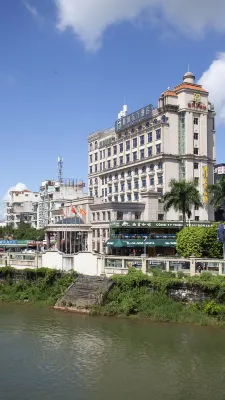


Hotel near Dongxing
Hotel is located in Dongxing Port of entry and exit Daqing No. 5 boundary monument, and Vietnam Mong Street across the river, in front of the Beilun River exotic, after Dongxing Peoples International Wholesale center.This is a business and tourist resort hotel with complete supporting facilities in Dongxing City. It has a large scale, perfect facilities, and all kinds of luxury rooms. It is one of the higher grade hotels in Dongxing City and even Fangcheng port area.Hotel 1F and 2F are equipped with large shopping malls, which are ideal places for you to experience exotic customs and leisure shopping. The hotel has a large parking lot for guests to park free of charge.The restaurant is located on the 9th and 10th floor of the hotel, with elegant and comfortable environment. It is the highest sightseeing restaurant in Dongxing City, and you can have a panoramic view of the exotic scenery. The super luxurious banquet hall can accommodate 500 people at the same time. There are 15 banquet rooms with different decoration styles. It is the ideal place for wedding banquet, birthday banquet, opening ceremony and business reception.
Excellent
691 reviews
4.4/5
Price from
AU$ 68
per night

You Might Like
Hotels With BreakfastHotels With Twin RoomHotels With 1 Double BedHotels With Swimming PoolHotels With Free Cancellation
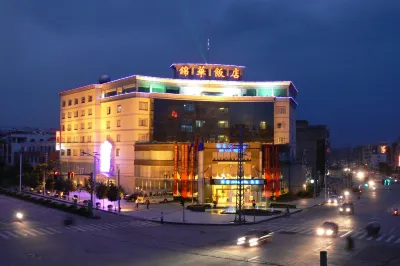
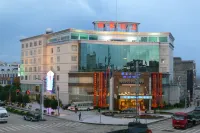
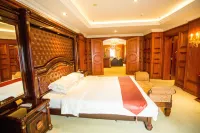
Hotel near Dongxing
The Jinhua Hotel (Jinhua Jiudian) is located on Xingdong road in Xingdong village, on the Vietnamese border near Fangchenggang. Rooms here are of the standard variety and feature IDD dialing, central A/C, mini bar and multi-type outlets. A collection of meeting rooms, function rooms and private dining rooms provide plenty of venues for you and your business to expand your presence in China, in addition to Wi-Fi in public spaces to ensure you don’t miss a beat. A Chinese and Western restaurant allow guests a selection of cuisines in addition to a coffee shop, lobby bar and tea house for lighter fare. The front desk can assist in currency exchange, reserve handicap friendly rooms or help you book an appointment to freshen up that perm in the beauty salon.
36 reviews
3.2/5
Price from
AU$ 46
per night

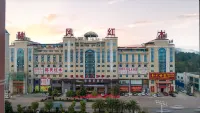

Hotel near Dongxing
The Remus Hotel provides a great place for travelers to relax after a busy day. The Remus Hotel offers a pleasant stay in Dongxing for those traveling for business or leisure. The hotel is just 5km away from Dongxingshi Railway Station. Seeing Dongxing's sights from this hotel is easy with Dongxing Water World Children's Theme Park, China-Vietnam Friendship International Paradise and Boundary Monument No.5 in the Great Qing Dynasty all close by. After a long day of sightseeing, guests can retire to the comfort of the hotel. This Dongxing hotel features parking on site. Germaphobes can rest easy - the level of cleanliness is highly rated at this hotel. This hotel is a popular accommodation for guests traveling for business.
Outstanding
321 reviews
4.7/5
Price from
AU$ 55
per night

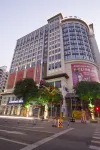

Hotel near Dongxing
The Lavande Hotel (Fangchenggang Dongxing Port Store) provides a great place for travelers to relax after a busy day. The Lavande Hotel (Fangchenggang Dongxing Port Store) is an ideal choice for travelers who want to take in the sights and sounds of Dongxing. Dongxingshi Railway Station is the closest major transportation option, approximately 18km away. Traveling to and from the railway station is easy with Dongxingshi Railway Station located approximately 18km away. There's plenty to do nearby, with Chen Mansion, Ho Chi Minh Pavilion and Wenchang Tower in Dongxing City all within a short distance. At the end of a busy day, travelers can unwind and relax in the hotel or go out and enjoy the city. For those driving themselves, parking is provided on site. If you demand a high level of service, our guests have indicated that this hotel has excellent standards. This hotel is particularly popular with those traveling with families.
Excellent
622 reviews
4.4/5
Price from
AU$ 45
per night



Hotel near Dongxing
The Lishang Grand Hotel is an ideal spot for travelers wanting to discover the city. Visitors to Dongxing will find that the Lishang Grand Hotel is a fantastic accommodation choice. The hotel is approximately 17km away from Dongxingshi Railway Station. The nearest railway station is Dongxingshi Railway Station, approximately 17km from the hotel. The nearby area boasts an abundance of attractions including Guanyin Temple, Sino-Vietnam Friendship Bridge and Guan Yu’s Temple. This hotel makes a great place to kick back and relax after a long day of sightseeing. This Dongxing hotel offers parking on site.
42 reviews
3.6/5
Price from
AU$ 32
per night

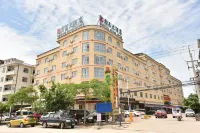
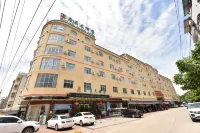
Hotel near Wanweijin Beach,Dongxing 100% of visitors choose this area
The Dongxing Xinchang Hotel provides a great place for travelers to relax after a busy day. The Dongxing Xinchang Hotel offers a pleasant stay in Dongxing for those traveling for business or leisure. The hotel is approximately 25km away from Dongxingshi Railway Station. The nearest railway station is Dongxingshi Railway Station, approximately 25km away. Seeing Dongxing's sights from this hotel is easy with Wanwei Golden Beach, Jintan Scenic Area Team 12 RV Camping Base and Cat Town Surfing · Beach Club Store 2 all close by. At the end of a busy day, travelers can unwind and relax in the hotel or go out and enjoy the city. Guests of this Dongxing hotel can make use of the parking facilities.
Very Good
59 reviews
4.1/5
Price from
AU$ 35
per night

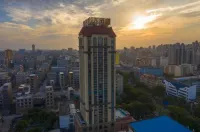
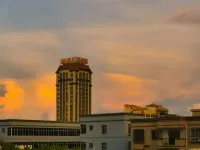
Hotel near Dongxing
Dongxing JX hotel is the wisdom of rooms, catering, conferences, banquets as one of the wisdom of the hotel. The hotel has more than 100 smart rooms, intelligent voice control room facilities and equipment, full of technology, give you a new smart experience. Please come to the Yu Garden Restaurant. The famous chef is responsible for abalone, ginseng and bird's fin, raw seafood, fine Cantonese food and authentic local food. The luxurious box which can accommodate 10 to 25 people is a high-end royal place for you to entertain VIP and friends. Xinyue cuisine restaurant, specializing in Vietnamese cuisine, Vietnamese coffee, fruit drinks, Vietnamese cuisine chef made of authentic Vietnamese cuisine, so that you can not go abroad to enjoy the Vietnamese cuisine feast. The hotel has a large and medium-sized multi-functional banquet hall, equipped with professional audio and full-color LED HD large screen is to hold wedding banquet, high-end conferences, Chinese and western-style business banquet venue of choice. Dongxing, Guangxi all-smart hotel, all-smart experience, let you enjoy close by.
Outstanding
964 reviews
4.8/5
Price from
AU$ 48
per night



Hotel near Dongxing
The Dongxing Dongyi Hotel (Beilun Avenue Port) provides a great place for travelers to relax after a busy day. The Dongxing Dongyi Hotel (Beilun Avenue Port) is an ideal choice for travelers who want to take in the sights and sounds of Dongxing. The hotel is located approximately 18km from Dongxingshi Railway Station. The nearest railway station is Dongxingshi Railway Station, approximately 18km away. Keeping busy is easy, with Hongqi Street, Vietnamese Ao Dai Cultural Street and Dong Xing Port all nearby. After a long day of sightseeing, guests can retire to the comfort of the hotel. This Dongxing hotel provides parking on site. According to our guests, this hotel provides a very high level of service. For guests traveling with families, this hotel is consistently one of the most popular choices.
Outstanding
418 reviews
4.6/5
Price from
AU$ 52
per night
Top hotel picks in Dongxing
See all
Check out these top-booked hotels from the past 30 days!
No.1
4.5/5
536 reviewKelly Smart Choice Hotel (Dongxing Guomen Port)
Hotel near Dongxing
"Convenient location""Great value for money"
Select dates to view pricesNo.2
4.6/5
445 reviewGerman Hotel (Dongxing Port)
Hotel near Dongxing
"Convenient location""Great amenities"
Select dates to view pricesNo.3
4.7/5
1482 reviewVienna International Hotel (Dongxing Port)
Hotel near Dongxing
"Large rooms""Great view"
Select dates to view pricesNo.4
4.7/5
1848 reviewRamada Plaza by Wyndham Dongxing Citycenter
Hotel near Dongxing
"Great view""Delicious breakfast"
Select dates to view pricesNo.5
4.3/5
176 reviewHaotai Hotel (Dongxing Port)
Hotel near Dongxing
"Clean and tidy""Convenient location"
Select dates to view pricesNo.6
4.1/5
47 reviewBincheng Hotel (Dongxing Port Store)
Hotel near Dongxing
"Clean and tidy""Large rooms"
Select dates to view pricesNo.7
4.5/5
57 reviewXingmu Inn (Dongxing Port)
Hotel near Dongxing
"Clean and tidy""Classy environment"
Select dates to view pricesNo.8
4.6/5
205 reviewINFINITYCHAINHOTEL
Hotel near Dongxing
"Classy environment""Great value for money"
Select dates to view pricesNo.9
4.7/5
299 reviewVienna International Hotel (Dongxing High-speed Railway Station)
Hotel near Dongxing
"Convenient parking""Classy environment"
Select dates to view pricesNo.10
4.6/5
407 reviewDong He Hotel
Hotel near Dongxing
"Great value for money""Convenient parking"
Select dates to view pricesHotels with tasty breakfast in Dongxing
See all
Start your day with a tasty breakfast at one of our favourite hotels in Dongxing.
Magnotel Hotel (Dongxing Guomen Port)
Hotel near Dongxing
The Magnotel Hotel (Dongxing Guomen Port) is an ideal spot for travelers wanting to discover the city. Visitors to Dongxing will find that the Magnotel Hotel (Dongxing Guomen Port) is a fantastic accommodation choice. The hotel is located approximately 17km from Dongxingshi Railway Station. Traveling to and from the railway station is easy with Dongxingshi Railway Station located approximately 17km away. With Ho Chi Minh Pavilion, Vietnamese Ao Dai Cultural Street and National Grand Theatre - Mysterious Southeast Asia all within a short distance, there is no shortage of things to do in the area. After a long day of sightseeing, guests can retire to the comfort of the hotel. Guests of this Dongxing hotel can make use of the parking facilities. There's never a dull moment at this hotel, our guests indicate that the facilities are excellent. For guests traveling with families, this hotel is consistently one of the most popular choices.
4.7/5
Outstanding679 reviewPrice per night from:AU$ 33
4.8/5
Outstanding226 reviewPrice per night from:AU$ 38
GreenTree Inn
Hotel near Dongxing
The GreenTree Inn is an ideal spot for travelers wanting to discover the city. The GreenTree Inn offers a pleasant stay in Dongxing for those traveling for business or leisure. The hotel offers easy access to Dongxingshi Railway Station, just 9km away. With Wenchang Tower in Dongxing City, Dong Xing Port and National Grand Theatre - Mysterious Southeast Asia all within a short distance, there is no shortage of things to do in the area. At the end of a busy day, travelers can unwind and relax in the hotel or go out and enjoy the city. Guests of this Dongxing hotel can make use of the parking facilities. When it comes to Dongxing hotels, the GreenTree Inn is highly regarded for its excellent facilities. This hotel is particularly popular with those traveling with families.
4.5/5
Excellent317 reviewPrice per night from:AU$ 27
Xingcheng Hotel (Dongxing Port Branch)
Hotel near Dongxing
The Xingcheng Hotel (Dongxing Port Branch) is a great choice for guests looking for accommodation in Dongxing, having been recently renovated in 2024. From the hotel, Dongxingshi Railway Station is just 8km away. Guests will find Chen Mansion, Ho Chi Minh Pavilion and Dong Xing Guo Men Scenic Area just a short distance from the hotel. At the end of a busy day, travelers can unwind and relax in the hotel or go out and enjoy the city. This Dongxing hotel features parking on site. According to our guests, this hotel provides a very high level of service.
4.9/5
Perfect105 reviewPrice per night from:AU$ 37
South Asia Hotel
Hotel near Dongxing
The South Asia Hotel provides a great place for travelers to relax after a busy day. Visitors to Dongxing will find that the South Asia Hotel is a fantastic accommodation choice. Dongxingshi Railway Station is the closest major transportation option, approximately 19km away. Dongxingshi Railway Station is approximately 19km away by road. Keeping busy is easy, with Hongqi Street, Vietnamese Ao Dai Cultural Street and Dong Xing Port all nearby. At the end of a busy day, travelers can unwind and relax in the hotel or go out and enjoy the city. This Dongxing hotel features parking on site. Germaphobes can rest easy - the level of cleanliness is highly rated at this hotel.
4.3/5
Excellent82 reviewPrice per night from:AU$ 74
Echarm Hotel (Dongxing Minzu Road)
Hotel near Dongxing
The Echarm Hotel (Dongxing Minzu Road) provides a great place for travelers to relax after a busy day. The Echarm Hotel (Dongxing Minzu Road) offers a pleasant stay in Dongxing for those traveling for business or leisure. The hotel offers easy access to Dongxingshi Railway Station, just 8km away. Famous local attractions National Grand Theatre - Mysterious Southeast Asia, Vietnamese Ao Dai Cultural Street and Ho Chi Minh Pavilion, can all be reached with a short walk. When guests have some time on their hands they can make use of the onsite facilities. This Dongxing hotel offers parking on site. Our guests consider this hotel to have excellent service. This hotel is a popular accommodation for guests traveling with families.
4.7/5
Outstanding349 reviewPrice per night from:AU$ 43
Jinhui Hotel (Dongxing Municipal Government Branch)
Hotel near Dongxing
The Jinhui Hotel (Dongxing Municipal Government Branch) provides a great place for travelers to relax after a busy day. Visitors to Dongxing will find that the Jinhui Hotel (Dongxing Municipal Government Branch) is a fantastic accommodation choice. The hotel is located approximately 16km from Dongxingshi Railway Station. The nearest railway station is Dongxingshi Railway Station, approximately 16km away. Seeing Dongxing's sights from this hotel is easy with Dongxing City Sports Center - Swimming Pool, Dongxingwaitan Park and Chen Mansion all close by. After a long day of sightseeing, guests can retire to the comfort of the hotel. This Dongxing hotel provides parking on site. According to our trusted guests, the facilities at this hotel are first-rate.
4.7/5
Outstanding43 reviewPrice per night from:AU$ 38
Dongxing Aegean Hotel
Hotel near Wanweijin Beach, Dongxing 100% of visitors choose this area
The Dongxing Aegean Hotel is an ideal spot for travelers wanting to discover the city. The Dongxing Aegean Hotel offers a pleasant stay in Dongxing for those traveling for business or leisure. In terms of transportation, Dongxingshi Railway Station is approximately 22km away. Dongxingshi Railway Station is the closest option for those who prefer to travel by train, approximately 22km away. With multiple attractions nearby including Wanwei Golden Beach Scenic Area - No. 4 Sea Viewing Platform, Golden Beach Scenic Area and Donghai Taohuadao Happy World, guests will find plenty to keep themselves occupied. In their spare time, guests can explore the hotel's surroundings. Guests of this Dongxing hotel can make use of the parking facilities.
4.0/5
Very Good40 reviewPrice per night from:AU$ 49
Jingxiang Inn
Hotel near Wanweijin Beach, Dongxing 100% of visitors choose this area
The Jingxiang Inn is an ideal spot for travelers wanting to discover the city. The Jingxiang Inn is an ideal choice for travelers who want to take in the sights and sounds of Dongxing. Dongxingshi Railway Station is the closest major transportation option, approximately 24km away. The nearest railway station is Dongxingshi Railway Station, approximately 24km from the hotel. With multiple attractions nearby including RV Camping Site, Jintan Scenic Area Team 12 RV Camping Base and Jingdao Tourist Resort, guests will find plenty to keep themselves occupied. This hotel makes a great place to kick back and relax after a long day of sightseeing. This Dongxing hotel offers parking on site. According to our guests, this hotel provides a very high level of service. For guests traveling with families, this hotel is consistently one of the most popular choices.
4.7/5
Outstanding127 reviewPrice per night from:AU$ 58
Lanhai Yijing Sea View Resort Hotel
Hotel near Dongxing
The Lanhai Yijing Sea View Resort Hotel provides a great place for travelers to relax after a busy day. The Lanhai Yijing Sea View Resort Hotel is an ideal choice for travelers who want to take in the sights and sounds of Dongxing. In terms of transportation, Dongxingshi Railway Station is approximately 23km away. Traveling to and from the railway station is easy with Dongxingshi Railway Station located approximately 23km away. Seeing Dongxing's sights from this hotel is easy with Southern Boundary Monument, Golden Beach Scenic Area and Donghai Taohuadao Happy World all close by. In their spare time, guests can explore the hotel's surroundings. For those driving themselves, parking is provided on site.
2.8/5
19 reviewPrice per night from:AU$ 88
What travellers say about Dongxing attractions
Discover these places worth visiting in Dongxing and select a hotel nearby for ultimate convenience
Dong Xing Port
Bbinger1031Boundary monuments, Ho Chi Minh Pavilion, national gate... several iconic buildings are easy to find, and the rest is shopping. Things are indeed cheap, but they can all be bought online.
The towering national gate stands on the bank of the Beilun River, solemn and majestic, and the five-star red flag flies high to declare sovereignty. Just 100 meters away from the port is Mong Cai, Vietnam, and the China-Vietnam Friendship Bridge connects the two countries. There is a No. 5 boundary monument of the Qing Dynasty by the river, with the words "Qinzhou Boundary of the Qing Dynasty" engraved in the middle of the monument. Now it is no longer a real boundary monument, standing on the border line and becoming a cultural relic. The prosperity of border trade has brought prosperity to the city. Every street and every building looks very new, and there are no relics of the ancient city at all. There are shops on both sides of the street, and there are a variety of specialties. We strolled on the street, and there were endless pedestrians. Green canvas hats, pointed white hats... You can appreciate the culture and customs of foreign countries without leaving the country. Of course, I prefer the streets in the morning. Without the hustle and bustle, it has returned to its original appearance.
Wanwei Golden Beach
山山在穷游When you came to Bailang Beach, in fact, you have come to Wanwei Golden Beach. The area here is still quite large. From this to that end, I feel the beauty of the beach and feel the changes of the beach. I saw a lot of small crabs crawling on it. I also saw a small dead fish lying on top of it, and heard local fishermen say that at night they would go to the other end of the beach to catch squid, which is my favorite activity
Dong Xing Guo Men Scenic Area
山山在穷游Dongxing Guomen Scenic Area is a very large and general attraction. There are both Guomen, many boundary monuments, and some ancient buildings that have been left at the time. When we come here, we can visit the park and remember the martyrs. Is a nice border city attraction, the main thing is that these things are free
Yuenan Street
郭郭润龙浪迹天涯20230615 afternoon:
1. "National Gate Three Streets" is located in the 4A scenic spot "Dongxing National Gate". Dongxing National Gate is a land port connecting Fangchenggang City, Guangxi Province and Mong Cai, Vietnam. It was established in 1958 and is an important trading port between China and Vietnam. It has more than 3 million people entering and leaving the country each year, ranking third among all land ports in the country and first in Guangxi Province. It was once used as an export channel for aid to Vietnam. It was closed in 1978 due to the Sino-Vietnamese self-defense counterattack and reopened in 1994. Chinese and Vietnamese residents traveled between China and Vietnam through the "Sino-Vietnamese Friendship Bridge" across the Beilun River. The center line of the Beilun River is the border between the two countries.
① Address: No. 63, Zhongshan Road, Dongxing City, Fangchenggang City, Guangxi Province.
② Transportation: Direct bus, but you have to walk 1.1 kilometers after getting off. It is easy to park by car.
③ Peak season: None.
④ Time: 2 hours.
2. Customs clearance precautions:
① You cannot take photos when entering the port indoors.
② Do not help strangers to carry things through customs: if something goes wrong, it will be considered smuggling at the least, and if there are drugs in it, the consequences will be disastrous.
③ Prohibited items: animals, plants, fruits, seeds, audio tapes, video tapes, etc. These are the most easily neglected. I won’t mention other well-known contraband.
④ When passing through customs, put down the new version of your passport at the first gate (the new version of the passport has a camera symbol under the "passport" on the cover) for scanning, and the countdown is 10 seconds. Go to the manual channel with the old version of your passport; scan your face at the second gate.
⑤ There is a very small probability that some people will be randomly checked for baggage inspection.
3. The Sino-Vietnamese Friendship Bridge is located between the Chinese port and the Vietnamese port. It was built in the 24th year of the Guangxu period of the Qing Dynasty (1898). It is an iron bridge jointly built by China and France, making the Dongxing Port a prosperous place for business. After the iron bridge was scrapped in 1957, it was rebuilt into a stone bridge the following year and named "Beilun River Bridge". It is 111 meters long. In 1960, when Tao Zhu, then the first secretary of the Guangdong Provincial Party Committee, inspected the bridge, he changed the name of the bridge to its current name and inscribed the name of the bridge. The two words "Friendship" added reflected my country's good expectations for Sino-Vietnamese relations. However, things did not go as planned. During the Sino-Vietnamese self-defense counterattack in 1978, the Vietnamese side blew up the bridge. After the restoration of diplomatic relations between China and Vietnam in 1992, the bridge was rebuilt with funds from China. Residents walking on the Friendship Bridge are "out of the country" for China and "not in" for Vietnam. Their identities at this time are very strange.
4. The three national gate streets refer to the three port pedestrian streets, Jianshe Street, Mulan Street, and Diandian Street. Many buildings on the streets were built during the Republic of China period, and there are both Chinese and Vietnamese goods in the shops.
Dongxing Jingdao Scenic and Historic Interest Area
行行走毛毛How big is the Jingdao Scenic Area in Dongxing? In fact, you will find out when you come here. The entire Wanwei Golden Beach is within the Jingdao Scenic Area. It’s just that perhaps due to the impact of the epidemic in the past two years, the economy of the entire Qingdao Scenic Area is not very good. You will find that the very luxurious homestays built in the past are now unmanned. But I believe that with such beautiful natural scenery, this place will soon get better.
Boundary Monument No.5 in the Great Qing Dynasty
山山在穷游When you come to Dongxing, you must see the national gate. At the same time, you must also see the No. 5 boundary marker of Qinzhou, the Qing Dynasty. There are actually several boundary markers here, and this boundary marker is the most famous, and it is also framed with glass. It is actually on the roadside. You can see it when you take a walk here in the early morning. There is still a certain difference between looking at the ancient boundary markers and looking at our current ones.
No.1 Boundary Monument of Qing Dynasty
中中西南北东In the 11th year of Emperor Guangxu's reign (1885), the Qing government and France signed the Sino-French-Vietnamese Treaty in Tianjin. The following year (1886), the Qing government sent personnel to meet with French boundary surveyor Dillon to survey the Sino-Vietnamese border. In the 16th year of Emperor Guangxu's reign (1890), the then prefect of Qinzhou and French officials jointly signed the "Boundary Treaty" and erected a stone boundary here, so it was called "Boundary Monument No. 1 of the Great Qing Dynasty".
"Boundary Monument No. 1" is a symbol of the vicissitudes of the motherland.
In fact, this boundary monument is surrounded by Chinese territory. A few dozen meters away from the boundary monument is the Beilun River. The real border between China and Vietnam is in the middle of the Beilun River, which is naturally not suitable for building boundary monuments. Therefore, this boundary monument only serves as an "indication" rather than a "definition". On the other side of the river, on the Vietnamese territory, there is also a boundary monument erected by the Vietnamese side, which also serves as an "indication".
China-Vietnam Friendship International Paradise
郭郭润龙浪迹天涯20230615 afternoon:
1. "China-Vietnam People's Friendship Park" is located in the 4A scenic spot "Dongxing National Gate", which is the boundary river between China and Vietnam. Dongxing National Gate is a land port connecting Fangchenggang City, Guangxi Province and Mong Cai, Vietnam. It was established in 1958 and is an important trading port between China and Vietnam. More than 3 million people enter and exit the country every year, ranking third among all land ports in the country and first in Guangxi Province. It was once used as an export channel for aid to Vietnam. It was closed in 1978 due to the Sino-Vietnamese self-defense counterattack and reopened in 1994. Chinese and Vietnamese residents travel between China and Vietnam through the "China-Vietnam Friendship Bridge" across the Beilun River. The center line of the Beilun River is the border between the two countries.
① Address: No. 63, Zhongshan Road, Dongxing City, Fangchenggang City, Guangxi Province.
② Transportation: Direct bus, but you have to walk 1.1 kilometers after getting off. It is easy to park by car.
③ Peak season: None.
④ Time: 2 hours.
2. Things to note when going through customs:
① You cannot take photos when entering the port.
② Do not help strangers to carry things through customs: if something goes wrong, it will be considered smuggling at the least, and if there are drugs in it, the consequences will be disastrous.
③ Items prohibited from carrying: animals, plants, fruits, seeds, audio tapes, video tapes, etc. These are the most easily neglected. I won’t mention other well-known contraband.
④ When going through customs, put down the new version of your passport at the first gate (the new version of your passport has a camera symbol under the "passport" on the cover) for scanning, and the countdown is 10 seconds. Go to the manual channel with the old version of your passport; scan your face at the second gate.
⑤ There is a very small probability that some people will be randomly checked for baggage inspection.
3. China-Vietnam People's Friendship Park: It was built in 1958 and rebuilt in 2000. In the center stands a towering monument to commemorate the soldiers who died in my country's aid to Vietnam during the Vietnam War in 1954. There are also two friendship trees donated by Ho Chi Minh in 1960 and the tomb of martyr Chen Handong (he died in the anti-Japanese guerrilla struggle in 1945 and was reburied on a hillside in the park in 1959 with five other martyrs).
FAQs About Hotels in Dongxing
How much does it cost to stay in a hotel in Dongxing?
The average price for hotels in Dongxing is AU$ 55 for weekdays, and AU$ 58 for weekends (Friday–Saturday).
What are the best hotels in Dongxing?
From business trips to holiday stays, Dongxing offers a wide selection of popular hotels to suit every need. Kelly Smart Choice Hotel (Dongxing Guomen Port), German Hotel (Dongxing Port) and Vienna International Hotel (Dongxing Port) are excellent options for your stay.
What are the best family-friendly hotels in Dongxing?
Vienna International Hotel (Dongxing Port), Ramada Plaza by Wyndham Dongxing Citycenter and JX Hotel (Dongxing Port) are very suitable for family travel. Enjoy a trip together with your kids and other family members!
Which hotels in Dongxing have airport shuttle services?
Reaching your hotel in Dongxing is easy with hotels that offer airport shuttle services. Kelly Smart Choice Hotel (Dongxing Guomen Port), German Hotel (Dongxing Port) and Vienna International Hotel (Dongxing Port) provide reliable airport shuttle services.
What are the best pet-friendly hotels in Dongxing?
Dongxing Huaxing Express Hotel, Yicheng Express Hotel (Dongxing Daping Branch) and DONGXING HAOXING RV camping base are pet-friendly. Enjoy a stay with your pets!
What are the best sap hotels in Dongxing?
Planning a relaxing trip? Staying at a spa hotel can make your experience even more enjoyable. Kelly Smart Choice Hotel (Dongxing Guomen Port), German Hotel (Dongxing Port) and Vienna International Hotel (Dongxing Port) are great choices for spa hotels offering quality services.
Which hotels in Dongxing provide fitness facilities?
Kelly Smart Choice Hotel (Dongxing Guomen Port), German Hotel (Dongxing Port) and Vienna International Hotel (Dongxing Port) offer fitness facilities to help you stay active while away from home. Keep up with your fitness routine even when traveling!
Which hotels in Dongxing have the best breakfast?
Vienna International Hotel (Dongxing Port), Ramada Plaza by Wyndham Dongxing Citycenter and Lavande Hotel (Fangchenggang Dongxing Port Store) provide a tasty breakfast to help you get going.
Which hotels in Dongxing have swimming pools?
Kelly Smart Choice Hotel (Dongxing Guomen Port), Vienna International Hotel (Dongxing Port) and Lavande Hotel (Fangchenggang Dongxing Port Store) are great choices for hotels with swimming pools. Stay at any of these hotels to relax by the pool and make the most of your stay.
Local Travel Info
| Highest Price | AU$ 395 |
|---|---|
| Lowest Price | AU$ 13 |
| Number of Reviews | 25,436 |
| Total Properties | 911 |
| Average Price (Weekdays) | AU$ 55 |
| Average Price (Weekends) | AU$ 58 |
Keep Exploring
Most Viewed Hotels
More Accommodation Types
Pet friendly Hotels in DongxingFamily-friendly Hotels in DongxingSeaview Hotels in DongxingHotels in Dongxing That Provide Airport TransfersHotels in Dongxing With GymsHotels in Dongxing With Wi-FiHotels in Dongxing With ParkingHotels in Dongxing With Swimming PoolsDongxing HostelsDongxing ApartmentsDongxing Homestays3-Star Hotels in Dongxing4-Star Hotels in Dongxing2-Star Hotels in DongxingCity Comfort Hotels in DongxingGreenTree Inn Hotels in DongxingRamada Hotels in DongxingStarway Hotels in DongxingThank You Hotels in Dongxing